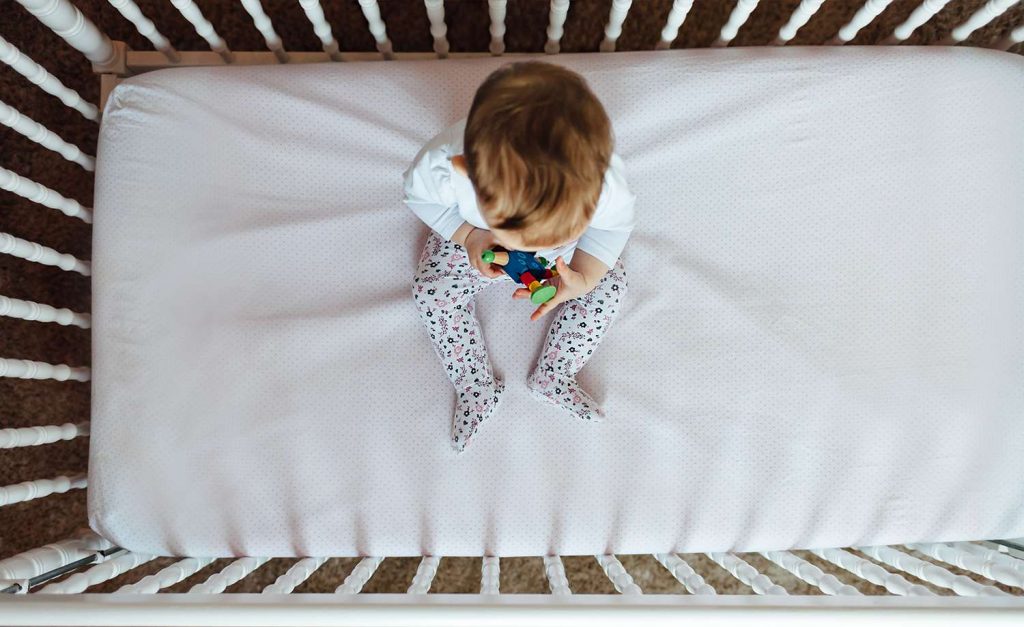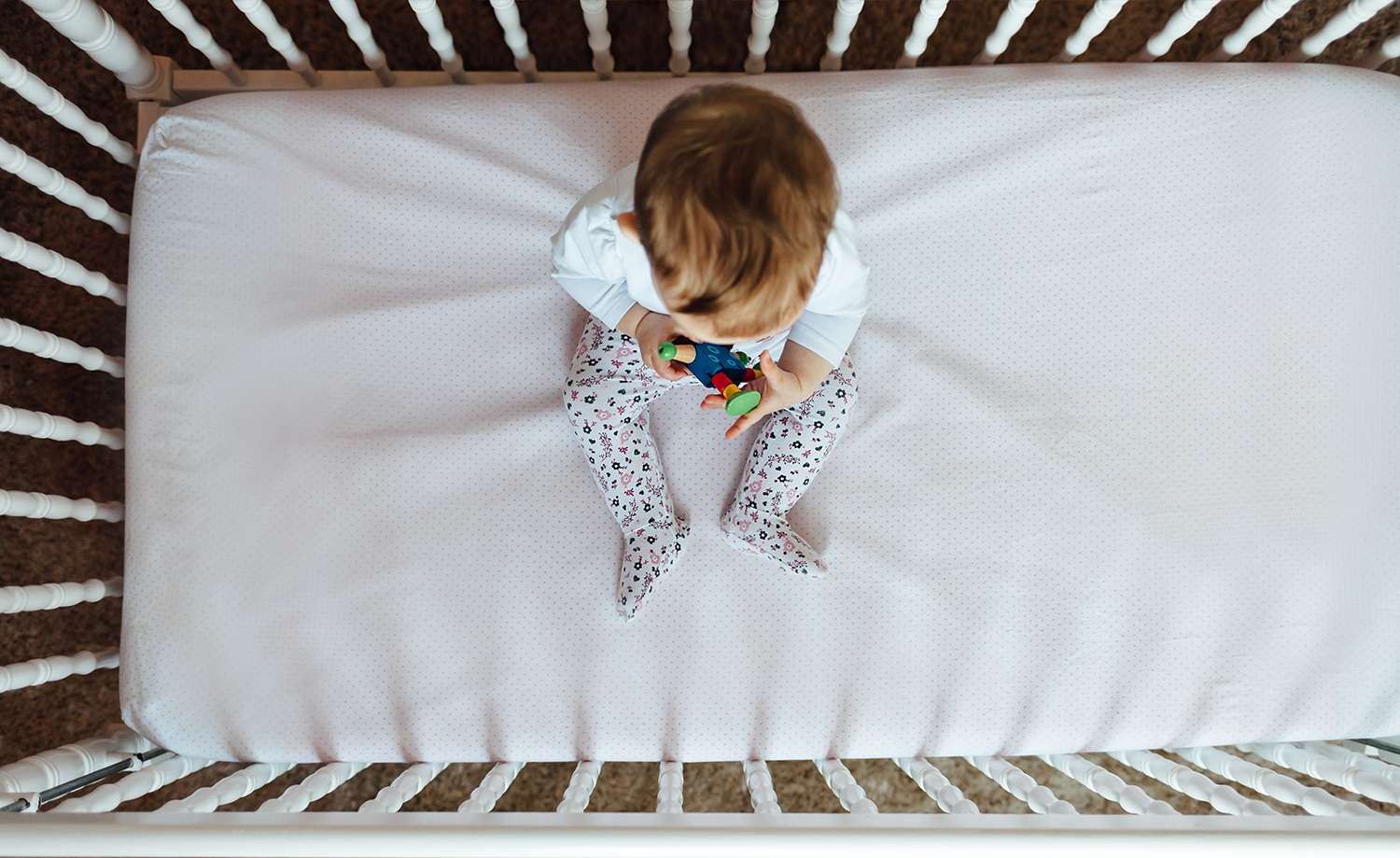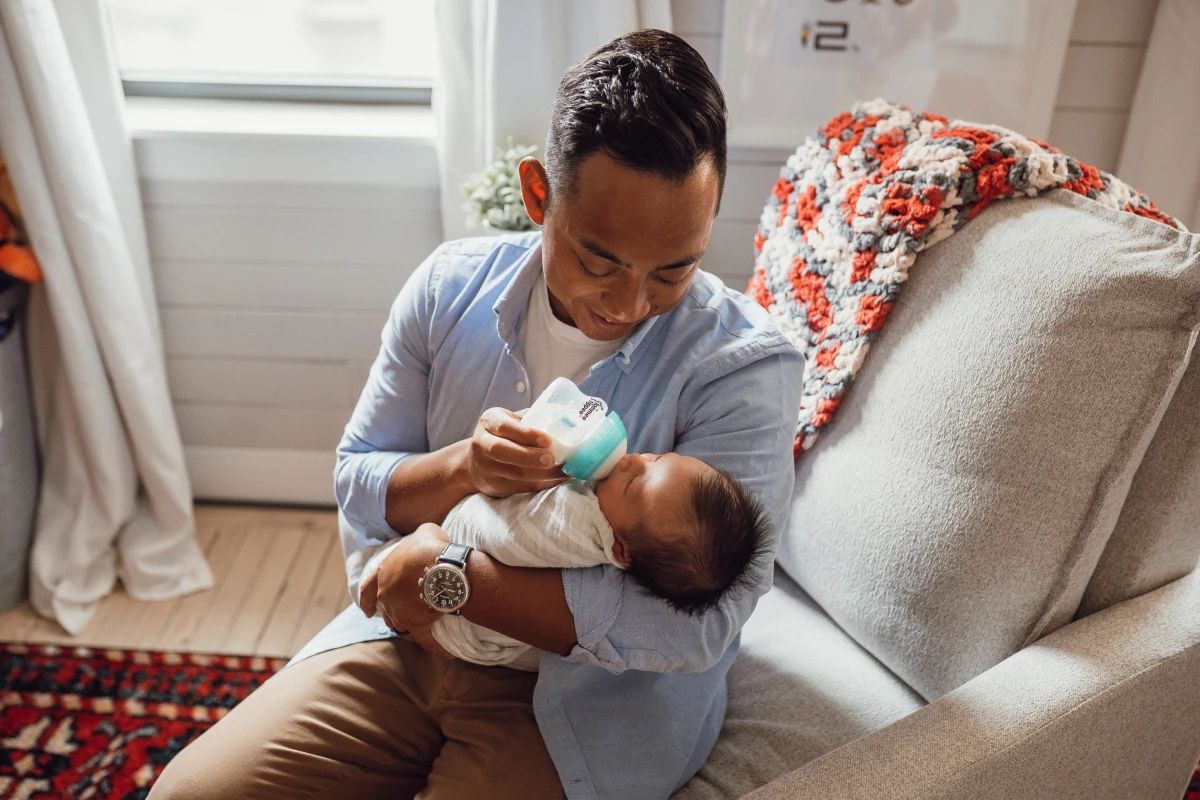Buying furniture and decor for the baby’s room is the most exciting part of being a first-time parent. I enjoyed the shopping and preparations to welcome my newborn, but there were some more things to consider before buying furniture – measurements.
Today, there are thousands of different baby furniture pieces on the market, especially cribs. You may face difficulty choosing even one only. Because cribs come in different sizes and shapes, it is important to find the right mattress that will fit.
Besides the mattress size, you should consider its firmness and thickness to ensure it will meet safety standards. For all standard cribs, there is a standard mattress size. So, now you may wonder what size is a standard crib mattress.
Depending on the manufacturer, there might be an inch or two difference in the mattress size, but generally, the standard mattresses perfectly fit most standard cribs.

What Size Is a Standard Crib Mattress?
The standard crib mattress has a length of 52 inches (132 centimeters) and a width of 28 inches (71 centimeters). Sometimes, the manufacturer might add an extra 0.5 to 1 inch on the side because of the mattress material and pattern, but they will also fit a standard crib because one inch is not a big problem.
Anyway, it is important to consider the type and size of the crib you buy. Not all cribs are the same size and shape, and not everyone chooses the standard ones.
For example, you might find standard mini cribs, which are smaller than the regular crib. The standard mini crib mattress dimensions are 38 inches (96,5 centimeters) in length and 24 inches (61 cm) in width. But, the dimensions also depend on the manufacturer since the length of the mini crib might range from 36 to 43 inches.
Depending on the seller, you might find a crib with a mattress and never face an issue finding a suitable one. But, in most cases, the mattress might be of bad quality or have limited options.
So, besides the mattress size, you should consider a few more factors, like firmness and material. I recommend choosing a firm mattress with two sides so that you can flip it over when your baby grows up into a toddler.
Difference between standard mattresses for mini and regular crib
As the name points out, the main difference between regular and mini cribs is in their size. The mini crib might be a good option if you are on a budget, need two separate cribs for twins in a smaller room, or you need a crib for the grandma’s house.
The mattresses for regular and mini cribs also differ in size. The mini cribs are generally 10 to 15 inches smaller than regular ones, so you need to find a good size suitable mattress for the crib.
The regular crib is actually a standard full-size infant crib and has a standard mattress size of 28 x 52 inches. Every other crib smaller than the regular one is considered a mini crib. No matter which crib size you choose, the gap between the mattress and the crib should be no more than 1 inch.
Safety standards
You may ask who stated the crib mattress standards and what size is a standard crib mattress. Well, I used to wonder that too; but looking at the online published regulations, everything got clear.
The mattress standards for a regular crib are federally regulated. The mattress dimensions are set to increase safety and prevent accidental suffocation and entrapment between the crib sides and the mattress.
The standards are also backed by laws and acts from 2008 and 2011. These regulations are determined for all standard-sized cribs. Unfortunately, they do not apply to other non-standard-size cribs like mini cribs and others.
Guided by safety, it is best to choose a crib with the following features:
- A tight-fitting mattress on the crib
- Firm or ultra-firm mattress
- Without decorative cut-outs on the footboard or headboard
- Space between the slats of no more than 2 ⅜ inches
- Corner posts with a height of no more than 1/16 inch
- Stationary crib rails
Also, you should adjust the mattress level as your kid grows. Lower the mattress when you notice that the kid starts pulling up on themself. When the kid’s height reaches around 35 inches, it is best to switch the crib to a regular bed.
Read more: When Should I Start Setting up the Baby Nursery?
Why is it important to choose the right crib mattress size and firmness?
Creating a safe sleeping environment for your infant is the most important factor in choosing a mattress. The right mattress size and firmness will prevent SIDS (sudden infant death syndrome).
A safe sleeping environment is when the mattress fits the crib snugly and has no more than two fingers gap between the crib’s sides. The mattress should also be firm, and no toys or crib bumpers should be around the crib.
Choosing a smaller mattress for a regular-size crib might be dangerous because there will be a lot of space between the mattress and the crib where your baby might entrap their head or other body parts.
Also, firmness plays a huge role here. On the mattress firmness scale, the mattress for the standard crib should be from 8 to 10. Too soft mattresses are not recommended because the infants have no motor control and may sink into the mattress and accidentally suffocate.
Also read: When Should I Start Shopping for Baby?
Conclusion
Infant safety guidelines and standards are regulated by laws on a federal level. These standards are generally set to prevent SIDS, and that is the main reason why you must consider the mattress’s standard size and firmness.
It is okay to ask about the standard size when buying a crib because it might prevent accidents that often happen if choosing the wrong mattress.
I know that it might sound scary, but you don’t have to worry. All you should do is consider the standard measures for the crib and mattress.








